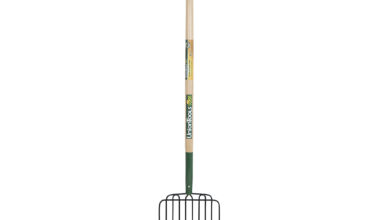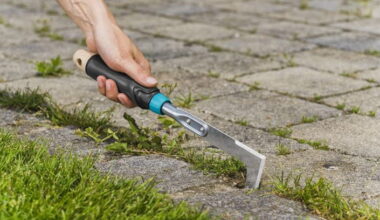Chainsaws are essential tools for many, from homeowners to professional loggers. They make tasks like cutting firewood, trimming branches, and even felling trees easier. However, like any powerful tool, chainsaws require proper maintenance to function at their best.
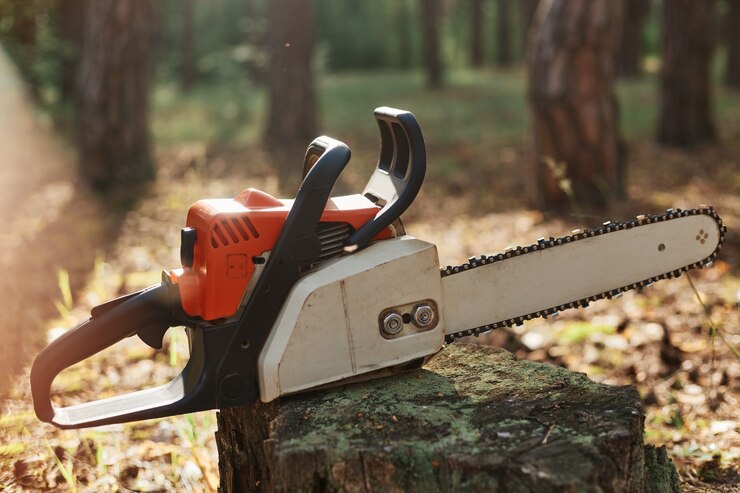
One common issue that chainsaw users encounter is over-oiling, which can lead to decreased performance and even long-term damage to the machine.
If you’ve noticed your chainsaw leaving excessive oil marks or dripping oil when not in use, you might be asking yourself: Is your chainsaw over-oiling?
In this post, we’ll explore the top 5 expert-recommended solutions to prevent and fix this issue, ensuring your chainsaw operates efficiently for years to come.
1. Understanding Chainsaw Oiling Systems
Before diving into solutions, it’s important to understand how chainsaw oiling systems work. Chainsaws rely on a steady flow of bar and chain oil to lubricate the chain and bar, reducing friction and preventing overheating.
This lubrication is critical to ensure smooth operation and to prolong the life of the chainsaw. Most chainsaws come with an automatic oiling system, which adjusts the amount of oil that’s dispensed based on usage.
However, if your chainsaw is over-oiling, this system may be malfunctioning or improperly adjusted. So, is your chainsaw over-oiling? Keep reading to learn how to fix it.
2. Signs Your Chainsaw Is Over-Oiling
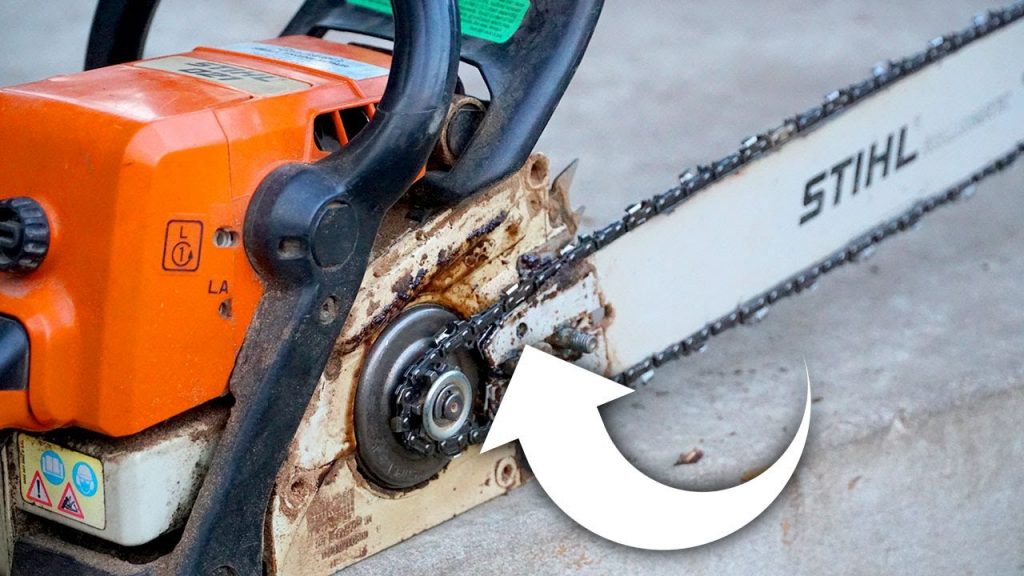
Now that you understand the basics of how chainsaw oiling systems work, it’s time to identify the signs of over-oiling. Common symptoms of an over-oiling chainsaw include:
- Excessive oil splatter: After cutting, you may notice large amounts of oil splattering on the ground, trees, or nearby surfaces.
- Oil dripping when idle: If your chainsaw continues to leak oil while it’s turned off, this is a clear sign of over-oiling.
- Wet or slick bar: The chainsaw’s bar may be slick or overly wet with oil, making it harder to grip and control.
When over-oiling occurs, the chainsaw may struggle to cut efficiently. Too much oil can cause buildup on the chain, leading to reduced cutting performance and the possibility of clogging.
If you’re noticing any of these signs and asking yourself, Is your chainsaw over-oiling?, the following solutions can help resolve the issue.
3. Common Causes of Over-Oiling : Is Your Chainsaw Over-Oiling?
Over-oiling can be caused by several factors, and understanding the root cause is the first step to fixing the problem. Here are some common reasons why your chainsaw might be over-oiling:
- Incorrect oil settings: Many chainsaws allow you to adjust the flow of oil to the chain. If these settings are too high, your chainsaw may be dispensing more oil than necessary.
- Faulty or clogged oil pump: The oil pump is responsible for delivering the right amount of oil to the chain. A malfunctioning pump can cause inconsistent oil flow, resulting in over-oiling.
- Using the wrong type of oil: Different chainsaws require different types of oil, and using the wrong kind can affect the oiling system. Heavier oils can clog the system or lead to excess lubrication.
- Environmental factors: Hot temperatures can cause oil to thin out, leading to over-oiling. Similarly, using the chainsaw in cold temperatures without adjusting the oil settings can cause problems.
By understanding these causes, you can better diagnose why your chainsaw is over-oiling and move forward with the right solution.
4. How to Adjust the Oiler Settings

If your chainsaw is over-oiling, one of the easiest fixes is to adjust the oiler settings. Most modern chainsaws come with an adjustable oiler that allows you to control how much oil is dispensed to the chain. Here’s how to do it:
Step-by-Step Guide to Adjusting the Oiler Settings:
- Locate the oiler adjustment screw: This is usually found on the bottom or side of the chainsaw, near the bar. Consult your chainsaw’s manual for the exact location.
- Turn the screw: Use a screwdriver to adjust the screw. Turning it clockwise will reduce the oil flow, while turning it counterclockwise will increase the flow.
- Test the adjustment: After adjusting the screw, test your chainsaw by cutting a small piece of wood. Check for oil splatter and chain performance. If oil is still excessive, further adjust the screw until you reach the desired oil flow.
Adjusting the oiler settings is a simple yet effective way to address over-oiling issues. Regularly check and adjust these settings, especially when using your chainsaw in different weather conditions.
5. Inspect and Maintain the Oil Pump

Another common culprit behind chainsaw over-oiling is the oil pump. This small but vital component controls the flow of oil to the bar and chain. If your chainsaw’s oil pump is faulty or clogged, it can lead to inconsistent oiling, including over-oiling.
Check here on How to Replace a Chainsaw Oil Pump
How to Inspect and Maintain the Oil Pump:
- Turn off the chainsaw: Always ensure the chainsaw is off and cool before inspecting the oil pump.
- Locate the oil pump: Refer to your chainsaw’s manual for the exact location of the oil pump. In many models, it’s located near the oil reservoir.
- Inspect the pump: Check for any visible signs of damage or clogging. If the pump is clogged with debris or thickened oil, clean it thoroughly.
- Replace if necessary: If the pump is damaged, consider replacing it. Replacement pumps are available for most chainsaw models and can be installed with basic tools.
By regularly inspecting and maintaining the oil pump, you can prevent over-oiling and ensure your chainsaw operates at peak performance.
6. Is Your Chainsaw Over-Oiling? : Use the Right Oil for Your Chainsaw
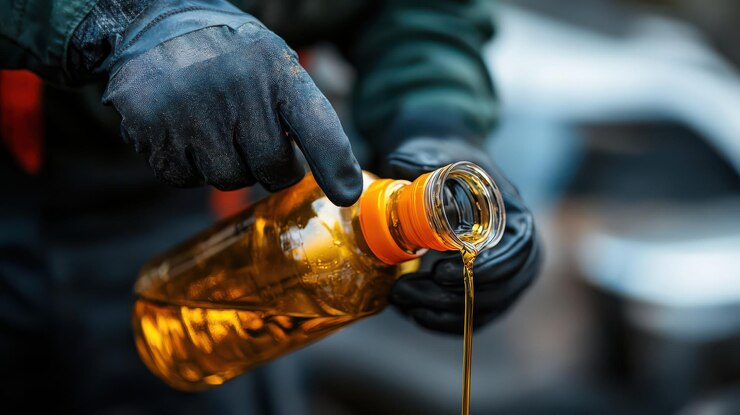
One of the simplest yet most overlooked solutions to chainsaw over-oiling is using the correct oil. Chainsaws require specific types of oil designed to flow properly through the oiling system. Using the wrong oil can lead to over-lubrication or clogging.
Expert Tips for Choosing the Right Chainsaw Oil:
- Bar and chain oil: This is the most common type of oil used in chainsaws. It’s specially formulated to provide the right level of lubrication without clogging or over-oiling.
- Temperature considerations: In colder temperatures, opt for lighter oils that won’t thicken and clog the system. In hotter conditions, use heavier oils to prevent over-oiling.
- Brand recommendations: Always consult your chainsaw’s manual or manufacturer’s recommendations for the best oil to use.
By using the right oil for your chainsaw and adjusting for environmental factors, you can prevent over-oiling and extend the life of your tool.
For a more detailed guide on how to choose the right Chainsaw Oil click here
Conclusion : Is Your Chainsaw Over-Oiling?
If you’ve been asking yourself, “Is my chainsaw over-oiling?”, you now have the answers and expert-recommended solutions.
From adjusting the oiler settings to inspecting the oil pump and using the right oil, these steps will help you resolve over-oiling issues and keep your chainsaw running smoothly.
Regular maintenance and a keen eye for performance issues are key to keeping your chainsaw in top condition. By following these expert tips, you can ensure that your chainsaw performs efficiently and safely, whether you’re cutting firewood or felling trees.
Want to keep your garden tools in top shape? Check out our other expert guides on lawnmowers, leaf blowers, and more! Stay informed with the latest insights right here on Garden Tools Expert.



